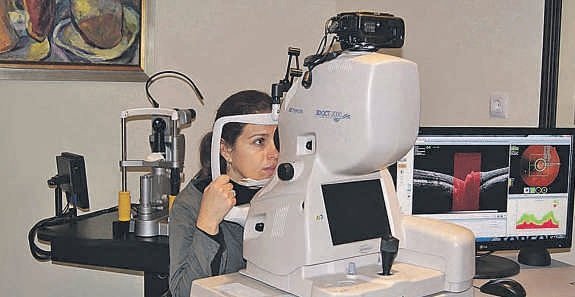The eye of the diabetic patient:retina and cataract
Written by: The incidence of diabetes mellitus in Spain affects 13.8% and a significant increase is expected in the coming years, according to the World Health Organization (WHO). Follow-up guidelines usually involve an annual review by the ophthalmologist.
The incidence of diabetes mellitus in Spain affects 13.8% and a significant increase is expected in the coming years, according to the World Health Organization (WHO). Follow-up guidelines usually involve an annual review by the ophthalmologist.
Diabetic retinopathy is one of the most frequent complications associated with diabetes and an important cause of blindness in the population between the ages of 25 and 65.. Vision loss can be prevented with proper treatment. 45% of the adult population suffering from diabetes also have diabetic retinopathy and an increased risk of developing cataracts at an early age. One of the medical objectives of Dr's team. Ruiz Lapuente is optimizing the management of eye problems related to diabetes.
To get the most appropriate treatment, it is essential to get a good diagnosis. Our center incorporates OCT high-resolution optical coherence tomography , electro-retinography with multifocal visual evoked potentials and MAIA microperimetry. With this diagnostic platform we can know the structure of the retina in a non-invasive way. We outline the operation of the different subzones and plan the treatment.
The new diagnostic means allow us to address the assessment of the diabetic retina and macular degeneration DMAE without pupillary dilation in most cases if required. The retina can hide microscopically early stages of diseases whose early approach will offer better treatment prospects. The OCT uses a few seconds to reproduce a virtual 3D image of all the retina layers. We complement the study with the MAIA microperimetry that allows us to know the exact point of visual fixation according to the visual treatments and to incorporate modalities of visual rehabilitation. The multifocal electrophysiology provides objective and sector-specific information on the electrical activity of the different layers of the retina and the optic nerve and also on the tolerance of some rheumatology treatments.
It is recognized that one of the basic pillars of having managed to eliminate diabetes as the first cause of blindness in our environment is the laser. Our center is a pioneer with the Pascal Amarillo Laser in pattern with the threshold treatment modality. Radically reduces the discomfort of treatment and respects the layers of the retina.

Why does the yellow laser bother less?
Ultra-short duration lasers do not give enough time to generate the discomfort of the conventional laser (green); neither does it allow the temperature rise respecting the necessary layers of the retina. Infiltrations of corticosteroids (Ozurdex®) , antiVEGF (Lucentis ®) and VEGF trap (Eylea ®) are performed when necessary.
The intervention that happens most in diabetics is cataracts. There are cases of special complexity in which patients benefit from the removal of small membranes through the posterior incisional vitrectomy technique, performed on an outpatient basis.
In diabetic patients, the cataract occurs more precociously. For your surgery it will not be enough with the new calculation technology to do without the glasses as much as possible; it will be necessary to ensure the stability of the health of the retina. In some cases, it will be necessary to proceed first to the treatment of diabetic retinopathy and then to approach cataract surgery.


